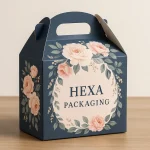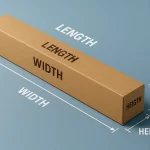One common question that both consumers and manufacturers often ask is:
This number isn’t just a random figure it reflects regulations, marketing psychology, and creative packaging design. Cigarette pack size influences everything from customer habits to brand image and even legal compliance.
In this detailed guide, we’ll explore the story behind cigarette pack sizes, the science of packaging design, and how you can make your cigarette boxes stand out in a highly competitive market.
Why Cigarette Pack Size Matters
A well designed pack does three things:
- Attracts customers with creative branding and visual appeal.
- Protects the cigarettes from moisture and damage.
- Complies with legal and health regulations in your target country.
Most smokers are familiar with the standard pack of 20 cigarettes, which fits easily in a pocket. But have you ever wondered why that number became the global norm? Let’s find out.
Standard Number of Cigarettes per Pack
This standard didn’t happen by accident. Here’s why:
- Regulation: Many governments have laws that limit or standardize cigarette pack sizes to prevent underage access.
- Consumer convenience: 20 cigarettes are just enough for regular smokers without making the pack bulky or expensive.
- Production efficiency: Manufacturers can streamline packaging dimensions, printing plates, and wrapping materials when the count is standardized.
- Psychology: The number 20 has proven ideal for pricing strategy and customer perception. It feels balanced, neither too little nor too much.
In short, 20 sticks per pack became the sweet spot between consumer comfort, production practicality, and marketing strategy.
Different Pack Sizes Around the World
Here’s a quick look:
| Country | Common Cigarette Pack Size |
| Australia | 26 Cigarettes |
| United States | 20 Cigarettes |
| Asia | 25–30 Cigarettes |
| Europe | 10–25 Cigarettes |
| Small Packs | 10 or 14 Cigarettes |
These packs are designed for occasional smokers or consumers who prefer compact packaging. They are lightweight and budget-friendly but banned in several countries to reduce youth smoking.
Large Packs (25–30 Cigarettes)
These are economy packs meant for heavy smokers or customers looking for more value per pack. They cost more upfront but have a lower per-stick price, appealing to loyal smokers.
Cigarettes per Carton: What You Should Know
Usually, a standard carton contains 10 packs of 20 cigarettes, totaling 200 sticks.
However, the number may change based on the region and product type:
- Small cartons: 5 packs of 20 cigarettes (100 sticks)
- Large cartons: 20 packs of 20 cigarettes (400 sticks)
For slim cigarettes, the carton dimensions are smaller and slimmer, but the total count remains similar.
This information helps brands estimate production cost, logistics, and material requirements when ordering custom cigarette boxes or cartons.
Cigarette Box Dimensions: The Technical Side
Here’s a quick size guide:
| Types Of Boxes | Regular Dimensions | Rolls Per Size |
| Regular Box | 85 × 55 × 22 | 20 Regular Rolls |
| King Box | 100 × 60 × 25 | 25–30 Long Rolls |
| Slim Box | 110 × 45 × 15 | 20 Slim Rolls |
| Custom Size
Variable Based on your brand concept Formula to estimate box size: Box Volume = (Length × Width × Height) Cigarette Volume = (Cigarette Length × Diameter) |
Then divide Box Volume ÷ Cigarette Volume = Total Sticks per Pack
This formula is often used by packaging experts at HexaPackaging to ensure precise fit, no wasted space, and perfect presentation.
Soft vs. Hard Cigarette Packs
When designing cigarette boxes, brands often debate between soft packs, hard packs, and flip-top boxes. Each has its own charm and purpose.
Soft Packs: The Classic Lightweight Choice
Soft packs are made of thin paperboard or flexible paper, making them lightweight and easy to carry.
They’re ideal for casual smokers but offer less protection against crushing.
Pros:
- Lightweight and flexible
- Cheaper to produce
- Compact and pocket-friendly
Cons:
- Easily deformed
- Less premium appearance
- Shorter shelf life
Hard Packs Premium Protection and Luxury Feel
They maintain their shape and look high-end, making them perfect for luxury brands.
Pros:
- Premium, durable feel
- Protects cigarettes effectively
- Ideal for custom printing and foil designs
Cons:
- Slightly heavier
- Slightly more expensive to produce
Flip-Top or Hinge-Lid Packs
Introduced by Philip Morris in 1955, the flip-top box revolutionized cigarette packaging.
The click sound of opening the lid became iconic engaging customers and creating a brand identity.
Today, flip-top cigarette boxes remain the most popular style globally, balancing usability, brand appeal, and protection.
Carton Packaging and Consumer Behavior
According to a BMC Public Health study, smokers who buy larger cartons (with more sticks) tend to smoke more frequently. Smaller packs can help limit consumption.
From a packaging business perspective, this insight matters because the way you design your cartons affects buyer behavior.
Legal Standards for Cigarette Packaging
Whether you sell in the USA, Australia, or Asia, your box must comply with the local health and labeling regulations.
| Country | Warning Coverage | Branding
Restrictions |
Key Regulations |
| USA | 50% front & back | Must include FDA-
approved warnings |
Tobacco Control Act |
| Australia | 100% plain color
(Pantone 448C) |
No logos plain text only | Public Health
(Tobacco) Act 2023 |
| Asia | 60% of the outer cover with images & text | No misleading
descriptors |
Ministry of Health
Packaging Law |
Pro Tip:
Always leave space for health warnings when designing your custom cigarette boxes. Use the remaining 40% for brand logo, product name, and finishing details like embossing or matte coating.
Eco-Friendly and Custom Packaging Options
At HexaPackaging, we create sustainable cigarette boxes using recyclable cardboard, kraft paper, and soy-based inks without compromising on the luxurious feel.
Customization options include:
- Rigid or foldable boxes
- Embossed or debossed logos
- Gold foil stamping
- Matte or glossy lamination
- Die-cut windows
- Recyclable inner liners
These features not only make your packaging stand out but also align your brand with environmental values — an important factor for today’s consumers.
How Packaging Design Boosts Sales
Cigarette packaging is a silent salesman.
It attracts the customer before they even light a stick.
A well-designed cigarette box communicates your brand’s story, class, and reliability.
Here’s how custom packaging helps your brand grow:
- Visibility: Bold designs make your product stand out on shelves.
- Perception: Rigid boxes signal quality and luxury.
- Consistency: Branded cartons reinforce identity and trust.
- Compliance: Custom designs ensure your packs meet health and labeling laws.
- When you combine creative design with functional structure, your brand can achieve long-term market dominance.
Frequently Asked Questions (FAQs)
Why are there 20 cigarettes in a pack?
Are there packs with 10 or 25 cigarettes?
What’s the difference between soft and hard packs?
How many cigarette packs are in a carton?
What should be printed on cigarette packs?
What are the average cigarette pack dimensions?
Regular box: 85 × 55 × 22 mm.
King box: 100 × 60 × 25 mm.
Slim box: 110 × 45 × 15 mm.




